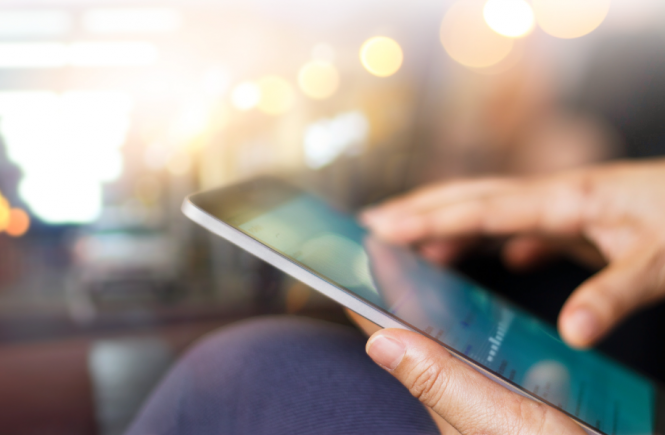Mobile learning is a big deal. A recent survey of the world’s leading eLearning experts (Jones, 2017) reported that mobile learning was the top eLearning trend predicted for 2017. This trend shouldn’t be surprising considering the way smartphones have become a ubiquitous part of modern life. In 2014, the number of mobile users outstripped desktop users (Chaffey, 2017) and by late 2016, worldwide mobile (phones and tablets) access to the Internet outstripped desktop access for the first time (Heisler, 2016).
As learners demand to be able to access all kinds of digital information – including learning experiences — on the go, learning designers need to understand the implications of mobile learning technology and adapt how they conceive of and create mobile learning content. This article looks at the advantages and limitations of mobile learning, and offers practical strategies for designing for smartphones.
Access and equity
Given the high price of many smartphones, one could be forgiven for thinking that mobile technology would be limited to those with the financial resources to afford it. However, mobile phone usage is now even higher in lowincome populations than in the general population.
It’s a shocking fact that of the world’s 7 billion people, more people now have access to a mobile phone than a toilet (Wang, 2013). While this speaks volumes about the poor state of access to basic sanitation around the world, it also highlights multinational companies’ success in putting mobile technology into the hands of people in a way that many governments have been unable to do.
In Australia, 95 percent of homeless people in Sydney and Melbourne have a mobile phone compared with 92 percent of the general population (Humphrey, 2014).
Smartphones are considered essential to connect with social services, find out where food is available, and find safe places to sleep rough.
Organisations seeking to assist poor and disadvantaged people can make significant inroads through delivering learning experiences via mobile technology. Smartphones have great potential to reach people who are excluded from formal education and provide them with information and educational opportunities that they need in order to create job prospects and thrive.
Learning ‘on the go’
Designing for mobile learning ‘on the go’ means being flexible about where people learn and when people learn. No longer content to sit in a training room with folders, people now expect to be able to participate in learning activities on the go.
When designing for mobile, make sure that each session is short and pithy so that people can learn in all those ‘in between’ moments we have in life. For situations where more lengthy learning sessions are desirable, consider podcasts for people to use while driving or exercising.
This kind of multi-tasked learning is not always the most effective way to learn; it is much more difficult to concentrate than a more traditional learning setting. Conversely, giving people learning opportunities as they go about their daily lives is often better than nothing at all. If learning designers are open to the idea that people may be learning ‘on the go’, they can design experiences which suit learners’ busy lifestyles.
Organisations seeking to assist poor and disadvantaged people can make significant inroads through delivering learning experiences via mobile technology.
Making use of the inherent functions of smartphones
Most of us are now walking around with a wonderous device in our pocket that is millions of times more powerful than all of NASA’s computing power that sent humans to the Moon and back (Puiu, 2015). As well as a camera, phone and screen, your typical smartphone also contains many hardware sensors that you won’t find in a desktop computer, including an accelerometer, a gyroscope, a magnetometer compass, an ambient light sensor, a proximity sensor and a GPS (Dolcourt, 2013).
If you are going to design for mobile learning, why not take advantage of the unique capabilities of the device?
Now that learners have the ability to record photos and video on their phone, some practical skill assessments that previously needed to be done face-to-face can now be done remotely. For example, a counselling student could upload a video of themselves participating in a practice counselling session. Likewise, this student-created video content can be easily shared in a secure learning environment for peer critique and social learning experiences.
Geolocation can be used to receive individual geographic positioning information and to present information that is relevant to a user’s location. For example, a company with multiple offices can present site induction information that is relevant to the learner’s current physical location.
QR codes are also used to tie a physical object to virtual content. Scan the QR code, and the relevant content launches on the mobile device. To give a simple example, a company could have a QR code on each photocopier in their multi-site organisation. An employee attempting to use the photocopier for the first time could scan the QR code, which then launches a short training video.
Augmented reality applications combine camera scanning technology, screen display properties, geolocation and gyroscope functions of the smart phone. They enable learners to superimpose layers of customised virtual content over the top of what they can see in the physical space. For example a jewellery store sales assistant could use her phone to scan a piece of jewellery such as a necklace. Augmented reality layers could appear on the smartphone screen superimposed over the necklace. The layers could show product-related sales information such as the features of the necklace, matching earrings to recommend etc.
Designing for the limitations of mobile
When designing for mobile, it is important to consider the features that mobile devices have to offer and their limitations.
Since many individual users have limited mobile data payment plans, it’s unfair to force learners to download large files. Either keep file sizes small, or allow learners to pre-download the files they need while they are connected to Wi-Fi.
Small screen size can be a design issue. Avoid tiny details and make buttons large. If drag-and-drop interactions are used, they should be simple so that the entire activity fits on a small screen.
Unlike desktops, mobile devices obviously use a touchscreen interface rather than a mouse. Mouse-over (rollover) interactions do not work, and instructions such as ‘Click on the button’ have no meaning in a touchscreen interface. A better instruction is ‘Select the button’, since it applies equally to touchscreen and mouse interfaces.
Responsive vs scalable layouts
Designing for the features and limitations of mobile devices may seem complicated enough. However, in many cases, learning designers are also asked to create content which works equally well in both mobile and desktop environments.
In this case, designers have three possible design options:
- Scale the screen, so that when viewed on a tablet or smart phone, the content is merely a smaller version of what’s on the desktop.
- Use an ‘adaptive design layout’, creating multiple versions of the same content for a range of specific devices.
- Use a ‘responsive layout’, so that the layout changes dynamically depending on the size and orientation of the individual device.
The chosen option is often dependent on the development tools available. Bespoke HTML development will usually be able to build in a way to suit the needs of the project. However, mobile design layout is often dependent on elearning content authoring tool features.
The trend among these tools is moving away from a scaled, fixed-size ‘interactive slide’ approach, towards responsive layouts which scroll down a long screen. However, responsive authoring tools sometimes also have unintended drawbacks, such as fewer interaction options and non-compliance with web accessibility standards.
If adaptive or responsive layouts are not an option, and it’s only possible to use a scaled screen, then ensure interactive elements and fonts are large enough to use even on a small smart phone screen.
Mobile devices provide opportunities to reach new groups of learners and provide innovative learning experiences in ways that were previously impossible. It is helpful to consider both the inherent features and limitations when designing for mobile devices. It is also important to use the best user interface design and content development methods available.

